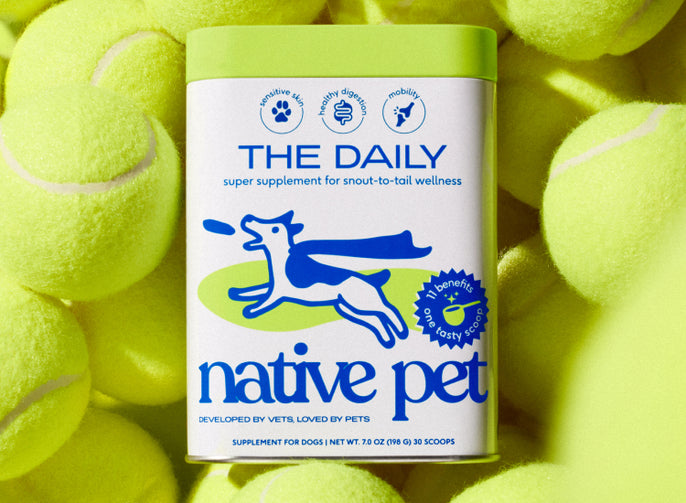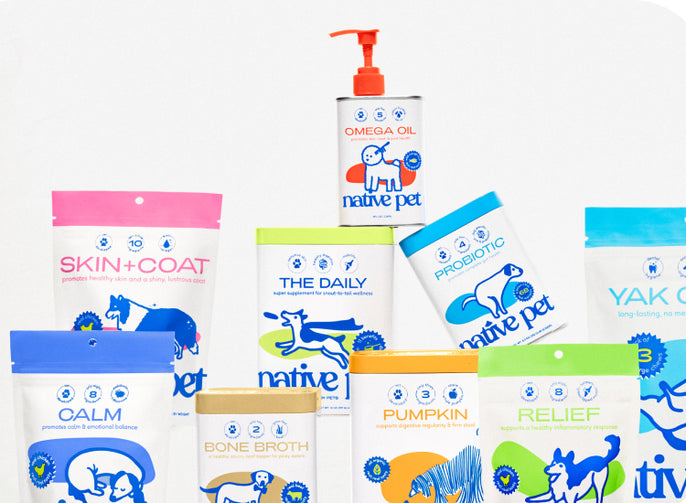By: Dr. Juli, DVM @itsdrjuli
Welcoming a new bundle of fur into your family is an exciting time for pet owners. Puppies have endless energy as they learn the dos and don'ts of puppyhood and adjust to their new human family. There is a lot to remember when caring for a young puppy, including several veterinary wellness visits, proper nutrition, socialization, and teaching them puppy manners to ensure they develop into well-behaved adult dogs. Additionally, ensuring your puppy’s immune system remains healthy is especially critical during their first few months of life, as their organs are developing and growing to support them into their adult years and beyond. Your dog is most at risk for contracting several infectious diseases during the first five months of their life because the maternal antibodies wane as a young puppy’s own immune system begins to take over. Common puppy diseases, like parvo, can be life-threatening, and a devastating diagnosis for dog owners. Fortunately, there are numerous ways to prevent this deadly disease in your four-legged companion.

What is canine parvovirus and how can my dog become infected?
Parvo is a highly contagious viral disease affecting primarily unvaccinated and/or young puppies, who become infected with the non-enveloped DNA virus called canine parvovirus (CPV). This virus infects various cells throughout the body including lymphocytes, a type of white blood cell. Once infected, the virus then spreads through the bloodstream causing the most damage to the gastrointestinal (GI) tract, specifically the small intestines. This virus can cause severe damage to the small intestinal lining, and prevent proper absorption of required nutrients. CPV can also cause a bloodstream infection, or sepsis, which can be fatal without immediate, aggressive treatment. Additionally, parvo may also affect the bone marrow or heart muscle in young puppies. CPV can affect any breed or aged dog, however, some breeds have an increased risk including American pit bull terriers, American Staffordshire terriers, Doberman pinschers, English Springer spaniels, German shepherds, Labrador retrievers, and Rottweilers.
CPV is highly resistant to most disinfectants and can survive in the environment for extended periods of time. CPV is spread between dogs primarily through contact with an infected dog's feces. However, CPV can also be spread through indirect contact with objects, or people that have been exposed to an infected dog, including:
- Leashes and collars
- Food and water dishes
- People’s hands or clothing
- Kennels and bedding
- Floor surfaces
- Dog parks
- Grass
- Puppy obedience classes

What are the symptoms of parvo in dogs?
Signs of parvo are variable and depend on the strength of the affected dog’s immune system. Most young puppies will have protection from their mother’s milk until they are around 6 weeks old, after which their own immune systems must take over. Puppies between the ages of 6 weeks old and 20 weeks old are most at risk for a severe parvo infection because their immune systems are still developing. Affected dogs will typically show CPV symptoms four days following exposure, which may include:
- Nausea and vomiting
- Mucoid, bloody diarrhea
- Lack of appetite
- Fever
- Low body temperature
- Lethargy
- Depression
- Weakness
- Abdominal bloating and pain
- Weight loss
It is not uncommon for infected dogs to shed the parvovirus before the onset of symptoms, and most dogs will continue to shed CPV for more than two weeks following the resolution of clinical signs.

How is parvo diagnosed and treated in dogs?
Bring your dog for immediate veterinary care if they are showing any CPV signs. Parvo symptoms can mimic other GI problems, which can make diagnosing this disease challenging. Diagnosis is based on a history of clinical signs, a thorough veterinary examination, and various laboratory tests. The most common diagnostic parvo test is a fecal CPV ELISA test, which is similar to a human at-home pregnancy test. This test can be completed by a veterinarian in 15 minutes and is highly accurate. CPV can also lead to a low white blood cell (WBC) count, so your veterinarian may recommend a complete blood count test, to check the levels of these cells. A low WBC count, combined with a positive CPV ELISA fecal test is the strongest indication of a positive parvo diagnosis.
There is no antidote to kill CPV. However, immediate aggressive supportive care and immune system support will ensure the best chance of recovery and survival from a CPV infection. Most infected dogs will require an extended hospital stay to ensure proper nursing care. Dogs who receive immediate, proper care have more than an 80% chance of survival. However, dogs who do not receive aggressive treatment, or those who do not show improvement after three days of care, will have a poor prognosis for survival. Treatment for a CPV infection may include:
- Intravenous (IV) fluids to correct electrolyte imbalances and dehydration, caused by excessive fluid loss
- Antinausea medication
- Antibiotics to prevent secondary infections or sepsis, which can be fatal
- Pain medication to alleviate any abdominal discomfort
- Plasma or blood transfusions
- Body temperature monitoring and regulation
- Nutritional therapy, including a probiotic, to rebalance disrupted gut flora
- Allergy-Immunity chews to support immune health
Can parvo be prevented in dogs?
Vaccinating your puppy against CPV is the most effective and best defense to prevent this potentially deadly virus. The American Animal Hospital Association (AAHA) conducts regular reviews of scientific data to determine the best way to ensure your pet is protected against common infectious dog diseases. Starting at 6 weeks of age, it is recommended that all puppies receive a series of three vaccinations every two to four weeks until they are 16 weeks old. The parvo vaccination is a core vaccination and is administered as part of a combination shot that includes protection against canine distemper virus, parainfluenza virus, and canine adenovirus-2. Dogs should then receive a booster the following year, and then every three years thereafter, to ensure they are adequately protected. Other parvo prevention tips include:
- Avoiding public parks, kennels, puppy classes, or contact with other dogs until your puppy completes their vaccination series
- Avoiding contact with any animal feces, or unvaccinated dogs
- Thoroughly cleaning all surfaces with a 1:30 diluted bleach solution, following a parvo diagnosis
- Isolating your CPV-infected dog for a minimum of 2 weeks following recovery, to prevent further disease spread
- Practicing good hygiene, and picking up all fecal material during walks



